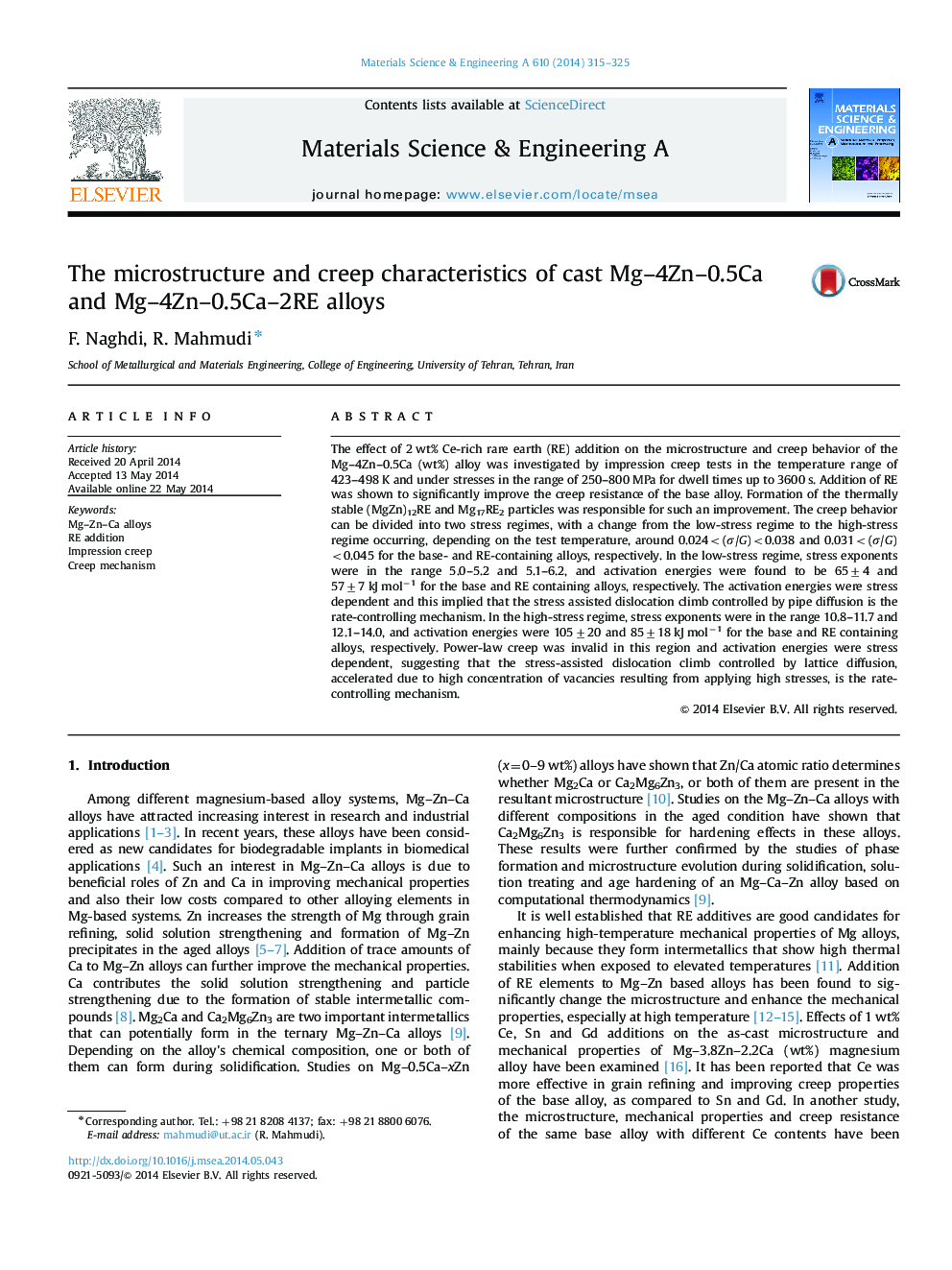| Article ID | Journal | Published Year | Pages | File Type |
|---|---|---|---|---|
| 1574920 | Materials Science and Engineering: A | 2014 | 11 Pages |
The effect of 2 wt% Ce-rich rare earth (RE) addition on the microstructure and creep behavior of the Mg–4Zn–0.5Ca (wt%) alloy was investigated by impression creep tests in the temperature range of 423–498 K and under stresses in the range of 250–800 MPa for dwell times up to 3600 s. Addition of RE was shown to significantly improve the creep resistance of the base alloy. Formation of the thermally stable (MgZn)12RE and Mg17RE2 particles was responsible for such an improvement. The creep behavior can be divided into two stress regimes, with a change from the low-stress regime to the high-stress regime occurring, depending on the test temperature, around 0.024<(σ/G)<0.038 and 0.031<(σ/G)<0.045 for the base- and RE-containing alloys, respectively. In the low-stress regime, stress exponents were in the range 5.0–5.2 and 5.1–6.2, and activation energies were found to be 65±4 and 57±7 kJ mol−1 for the base and RE containing alloys, respectively. The activation energies were stress dependent and this implied that the stress assisted dislocation climb controlled by pipe diffusion is the rate-controlling mechanism. In the high-stress regime, stress exponents were in the range 10.8–11.7 and 12.1–14.0, and activation energies were 105±20 and 85±18 kJ mol−1 for the base and RE containing alloys, respectively. Power-law creep was invalid in this region and activation energies were stress dependent, suggesting that the stress-assisted dislocation climb controlled by lattice diffusion, accelerated due to high concentration of vacancies resulting from applying high stresses, is the rate-controlling mechanism.
